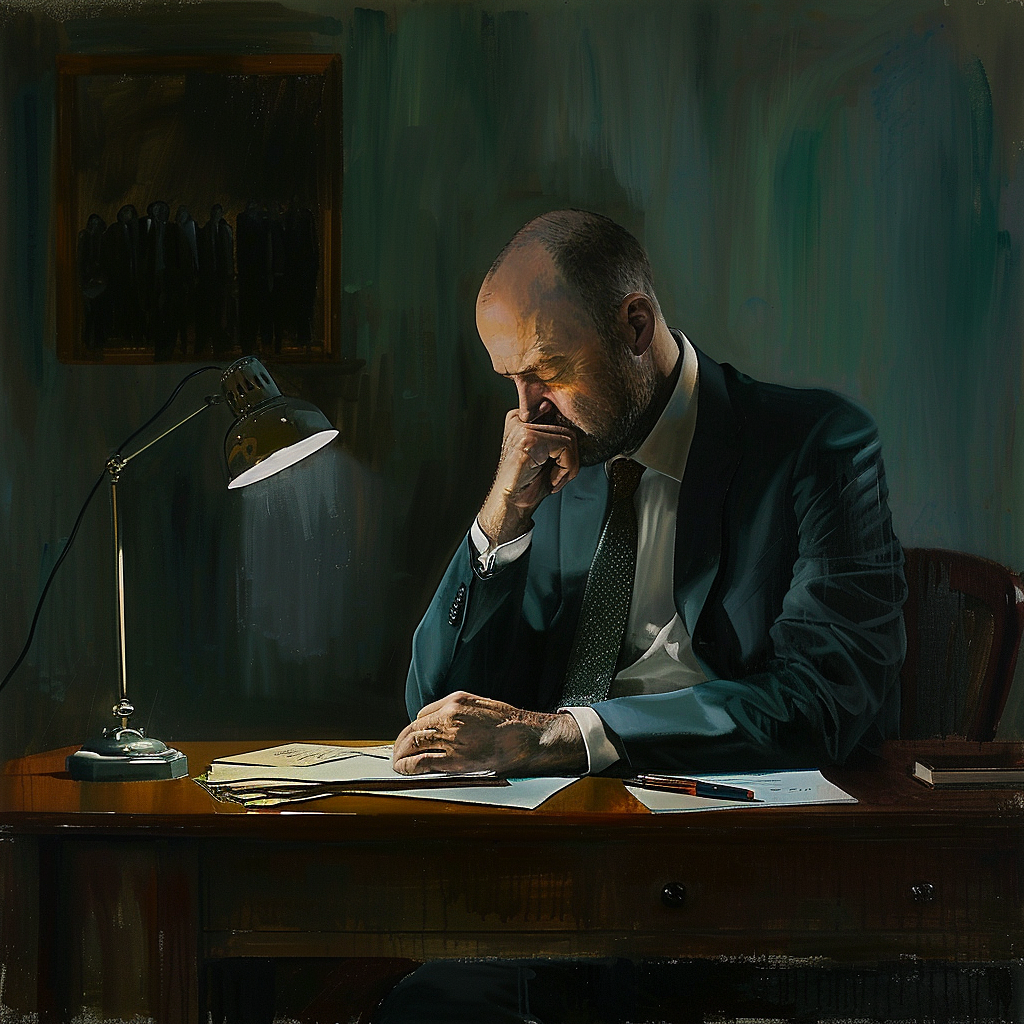
Business In Archviz
What is a good client?
But what is a good client, really?
This seems like a simple question, but you know me enough to know that there's probably more than meets the eye, and that my little brain has been pondering that question enough to come up with a few conclusions that, as it often seems, are the opposite of widespread beliefs in the industry.
So let's get started with a little bit of auto-patting on the back.
This summer, while you were perfecting your tan on the beach, I was working my ass off on a competition. Actually I took a 2 week break in the middle, but I wasn't tanning on the beach mind you.
So this contract was with a quite new client - we've only done 3 contracts together in the past year or so - but this time it was for a competition. Phase one of a fancy competition that we're hoping to be shortlisted for the second round. We'll keep our fingers crossed until then.
I can definitely say that while both the collaboration and final visuals were great, it doesn't mean this was smooth sailing through the contract. The first two weeks we actually quite messy and definitely not promising with no usable 3D model, part of the architect team away on vacation, and some big design decisions that were still not addressed.
And yet, despite all that, this was a success. Why?
The main reason is because I don't think that "working with a good client means everything will be easy". Working with a good client means different, more paramount things that we'll focus on now.
1. Aligned goals
To achieve success, the most crucial element is having aligned goals, which is surprisingly rare. It's uncommon for both clients and creatives to set aside their egos for the sake of the project. When the true objective is to create the best and clearest visuals for the competition, you'll notice a significant shift in how ideas are exchanged.
However, the typical scenario is that clients often push for safe, familiar solutions, while artists may advocate for creative approaches that aren't necessarily grounded in the project's needs but rather serve to enhance their portfolios. On the opposite end, a completely passive artist who only follows instructions without contributing ideas can also lead to subpar results. Even if you're an average artist, your expertise is generally broader and deeper than that of your client, and bringing your insights to the table can elevate the final product.
To align goals effectively, you first need to identify them—this is what I call "clarity of intent." It involves understanding what each image is meant to convey and what the team is ultimately trying to achieve. Without clear goals and a collective focus on achieving them, you're missing the opportunity to build a fruitful and fulfilling business relationship.
2. Open-mindedness
If both parties have aligned goals and truly want to make the best visuals for a project, they will stay open-minded to discussion and experimentation. Because you can't truly believe that you already have all the answers in your head from the get go.
I remember with that specific client hearing them tell me "if you think this idea is not good, really don't hesitate to tell us!". This also went as far as "you're an architect too, so if you see some details don't make sense architecturally speaking, don't hesitate to raise it with us so that we double check our ideas".
I know that every time I hear this type of comment from a client, this will usually set good foundations for a good collaboration and cool images down the road.
Of course, a conversation goes both ways, and I as well have to be open-minded to all their comments. And boy was there many comments, but no the type of stupid "ego comments" that ask to move stuff 1 cm, or change the framing for no reason, and add a bluer sky because "people like it".
I had them asking for more rain, more pronounced reflection and haziness, less people, and other things that are not that common for atists.
But what matters is not what they asked or suggested, it's the why.
When I start a new contract with a brand new client, or a new project team, I tend to explain quite thoroughly my process and philosophy because I know that sometimes clients can get caught on the hop. In short, it goes along the line of "whether you want it or not, I will experiment more than what you ask me just to be sure we've found the best solution, and I will only implement your feedback if you can justify them properly". Of course, I always leave some leeway for small insignificant changes, but for core ideas I will stay annoyingly demanding.
This way of doing usually impacts the future feedback logic of the client, where they genuinely try to justify better their thinking. This leads to richer conversations that are not merely based on opinions. And the reason they asked for rain and other "weird stuff" was because they understood how this would build up the composition and serve the goal of each image. Not just because it "looks cool".
But this goes both ways, every detail and ideas I put in my images are thoroughly justified, so that the client understands why the image looks this way, what effect I'm trying to create, why this should be successful, and then once we're on the same level, I can then receive feedback and see what they think and how we can make this image better.
As simple example from this competition, we had an ongoing discussion about the graphic style and how "unrealistic" and "schematic" we should keep the look of the image because the project was not really detailed yet (it's a first phase). I don't have a problem per se with unrealistic image, but since we were supposed to integrate the project on existing photos, I knew that the contrast would lead to ugly images. While some specific contrast can create dynamism and interest, a contrast in precision and information generally leads to the impression that there is something wrong with the image, that nothing is resolved.
I stated my concern clearly at the very beginning so that we could shift the conversation on how to "show a lot without showing much", and not fall in the schematic white look that is often a cookie cutter solution for this type of topic. Interestingly, this pushed the architect team to resolve a bit more their design, uncover some issues that lead to further design amendments, and overall, made the project better and stronger.
In the end the images look as realistic as my usual images, but the atmosphere and framing are done in a way that still leave a lot of room for imagination, while still anchoring the project in reality and showing the jury that "it works".
3. Truthfulness and honesty
This is kind of a mix of 1 and 2, but being truthful and honest is paramount if you want the best to come out of people.
If you say yes to every feedback even though you know the ideas you need to implement are bad, then this will just not work.
From experience, I think the vast majority of clients are ok with getting feedback that can sometime be quite negative (and those that can't handle it simply need to grow up ffs).
My optimistic and gullible self tend to think that it's better to be honest and lose some clients, than to have to wear a constant mask when you're working for people, and convince yourself that "it's not that bad".
Being able to say to a client "this idea really sucks, but I see what you're concerned with, and I think I can come up with a better solution if you give me a few hours" feels better and is more helpful to the conversation than "wow, great idea, let's do it!" knowing that you'll struggle to make it work and that the client will probably not be happy with the end result anyway.
The only way forward is through honest conversations. After all, what you're getting paid for is also your intuitions on topics related to visuals.
4. Fair pricing
And this brings us to one of my favourite topic. One that is largely underdiscussed, or when discussed, done so poorly that in the end it's just not helpful. The more I learn about the industry, the more I see that the industry is getting dragged down more by established studios rather than cheap freelancers.
So, what is fair pricing? It's simple. It's a pricing you're happy with, and your client is happy with. It's not a specific number, because "you" are different every single day, and every client is different.
This simple idea actually flies in the face of something I read recently on LinkedIn that you should absolutely charge the same for every client, a high number that is. That's plain stupid, and is probably just coming from a misunderstanding of price anchoring on the part of the author, as well as a dumbed-down understanding of value. But it's ok.
So how does it work then?
So, what is fair pricing? It's simple. It's a pricing you're happy with, and your client is happy with. It's not a specific number, because "you" are different every single day, and every client is different.
This simple idea actually flies in the face of something I read recently on LinkedIn that you should absolutely charge the same for every client, a high number that is. That's plain stupid, and is probably just coming from a misunderstanding of price anchoring on the part of the author, as well as a dumbed-down understanding of value. But it's ok.
So how does it work then?
You have to charge enough so that whatever the outcome of the project, you're financially and psychologically speaking.
Put like that, it doesn't seem much, but it actually is a quite robust approach. Why? Because it integrates... everything. Because to be content with the outcome of a project financially and psychologically speaking, you have to :
- Make enough to pay all your expenses (finance)
- Make enough to feel like you've not undercharged for all the work you've done (psychology)
- Make enough so that you're not driving the industry prices down (finance, ethics, psychology)
- Make not too much so that you don't feel like you've overcharged for your work and cheated your client (psychology)
- In practice, in my case for this very contract it looked like this :
- I have a base price that I generally gravitate around that I know will cover my expenses. A base price will vary from one artist to another, and can also incorporate some psychological aspect to it ("I need to make x€ per year to feel safe" is not the same as "I need to make x€ per year to cover my expenses").
- I knew that this was a fancy competition so there is a lot at stake, meaning I can charge more than for a small competition. I don't want to feel like I'm charging 500€ for a logo made for Apple.
- Knowing the general market and pricing points of a few companies in Europe, I generally make sure I'm either the same, or slightly more expensive, because I consider those to be already too low for their size, and don't want to impact negatively the market by sending signals that architectural visualization is a cheap service.
- When it comes to overcharging, I tend to naturally overdeliver so it's very rare that I feel like I haven't done enough. In this case we went from "schematic images" to "proper nice looking visuals" with only a small increase in price due to the number of images changing. Had we stayed in the schematic look, I probably would have felt bad charging so much for average looking images. But I guess I had the intuition that we could make proper images for that first round already.
A good client in a nutshell
So what is a good client, really? A good client is not a client with a lot of money. It's not a client that blindly listens to your grand ideas. It's also not necessarily a client that has a lot of work for you.
A good client is just someone that has clear goals, strives to make them clear to you, listens to your ideas to make the best possible outcome for the project, is willing to have an honest conversation and sometimes hear their ideas are garbage, or tell you your ideas are garbage, and is willing to pay what you think is fair.
Does that seem like a good summary, or am I missing something important?
I think those are the paramount aspects, others are good-to-have's. I have good clients that pay late. I have good clients that are messy. I have good clients that I can only charge the lowest range of my pricing. And still, I'd take them anytime against a rich asshole that listens to nothing and pays on time.
But here is the trick, your client is only as good as you make them. Don't expect to walk in a first meeting and have your client be an absolute perfect fit from the get go (it can happen though). You will always need to put in the work, to explain them what matters, how to do things, and why it's beneficial to them. After all, anything based on human relationship needs work, that's the nature of this type of interaction. But it's worth it.
I hope this will help some of you to clarify what you should be looking for in a client, not focus on the shiny things only, and understand that you will still need to put in the work, and that you can actually turn almost any client, into a good client. Every honest person is genuinely asking to grow, and good business relationships are one amongst many other ways one can grow.
Cheers
Simon
Cheers
Simon
PS : If you feel like this resonates a lot with your way of thinking and want a course that focuses on this philosophy and teaches you everything you need to know on how to make cool images, make them efficiently, and sell them like hot cakes to clients, check out my course.
You must be logged in to post a comment. Login here.
About this article
We all want good clients. But what really is a good client? In this article I tackle the main 4 traits or characteristics that a good client should have. The rest is just nice to have's. And guess what? Most people focus on the nice to have's, and not the core traits. So, read on, take notes, and remember what to focus on next time you work with a new (or even old) client.
visibility198
favorite_border0
mode_comment0








